We have just returned from Ecology Training UK’s first trip abroad to Sweden. When you are used to the UK’s wildlife, nothing quite prepares you for the majestic forests, stunning wildflower meadows and abundant wildlife. It truly is spectacular.
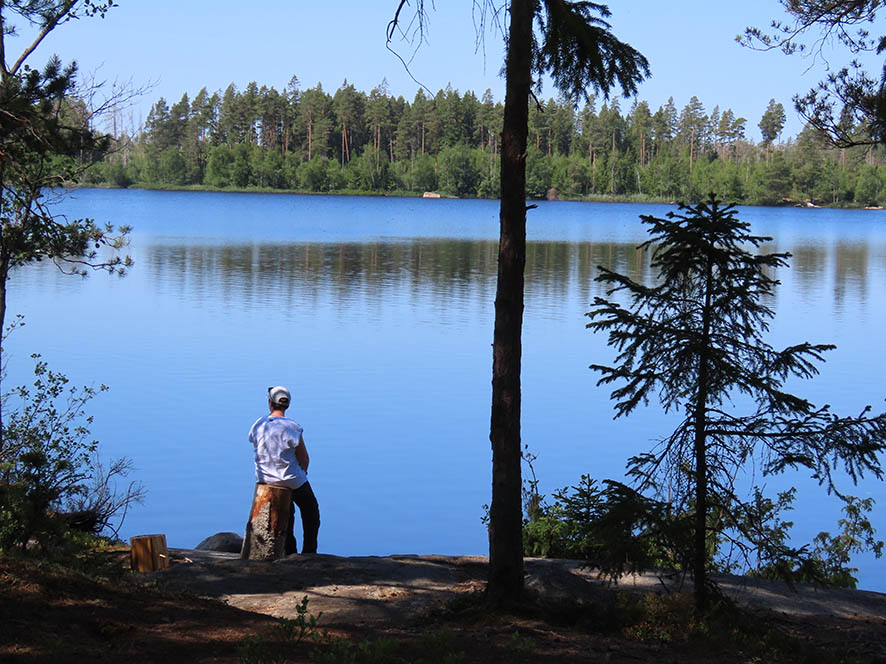
With an area of approximately 450,000 square kilometers, Sweden is more than twice the size of Britain (230,000 km2). With a population of around 10 million people compared to the UK’s 67 million. Sweden offers a sense of space and tranquillity. Often referred to as the “Land of a Thousand Lakes,” Sweden boasts a remarkable number of lakes. In fact, it is estimated that Sweden has over 96,000 lakes larger than 2.5 acres (1 hectare) in size. This abundance is a result of Sweden’s glacial history and geography.
Sweden’s pristine landscapes and incredible natural beauty stand as a testament to its unwavering commitment to conservation. The country has 30 National Parks and prides itself on protecting it’s diverse wildlife.
We went hiking through forests, swam in lakes, canoed down a river and wandered around glorious flower meadows. We felt like we were fully immersed in Sweden’s natural wonders, forging unforgettable connections with the wildlife and landscapes that define the country. Many times we found ourselves glued to the spot whilst looking at a red squirrel or an amazing bird, or on our hands and knees exploring the diverse botanical species in the raised bogs. This really was a treat for all of us.
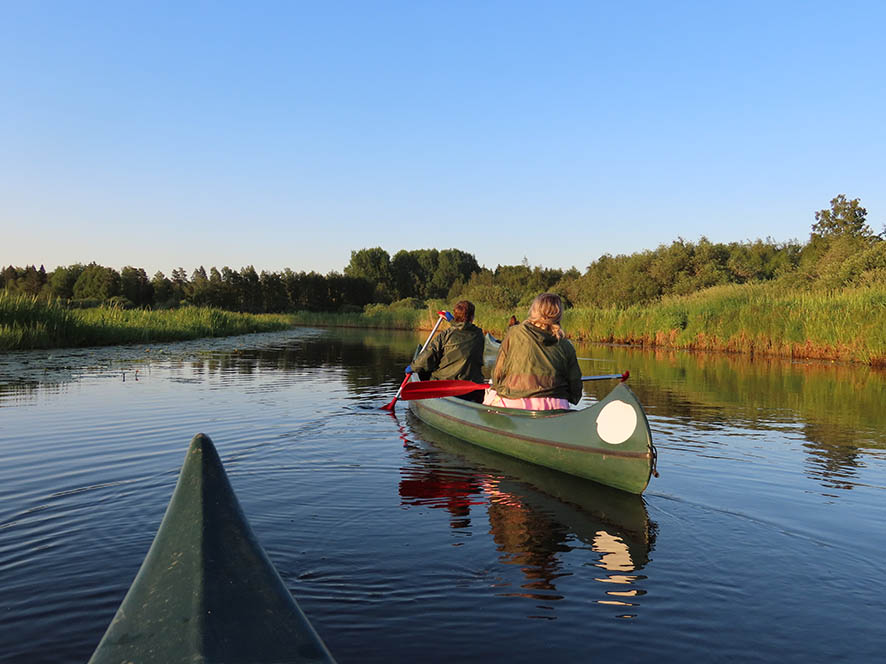
Our Guide Stefan knew the best places to go to see all sorts of habitats, animals and plants. One day we saw elk, a female with a calf, really close up. Elk are the largest land mammal in Europe, locally known as “älg,”. Elk thrive in the dense forests across Sweden. Seeing these majestic creatures in their natural habitat was an awe-inspiring experience. We also saw red deer, roe deer, fox, red squirrel, hare, wild boar and signs of pine marten and wolf.
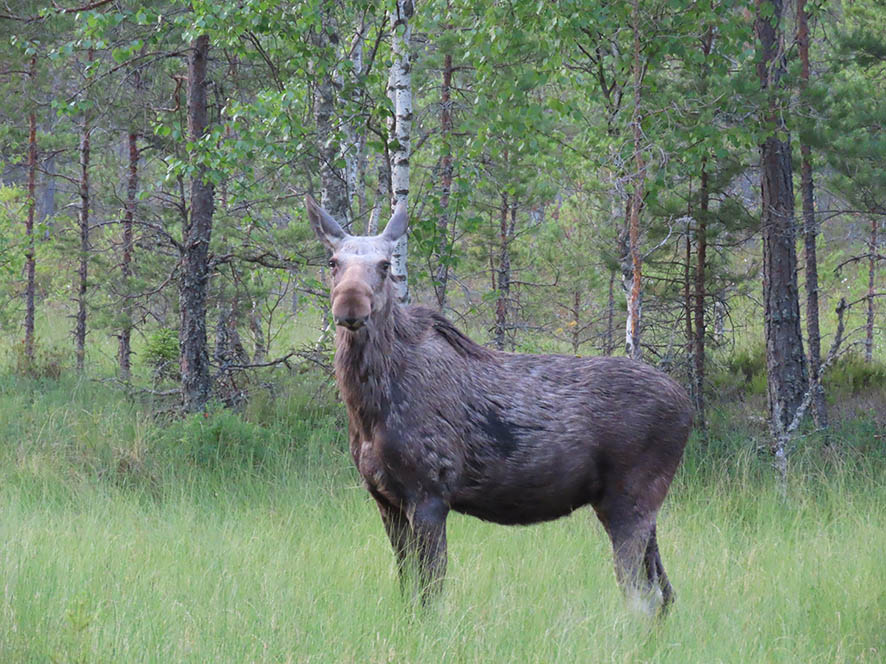
Sweden is also home to a remarkable lineup of predators such as bears, wolves, and lynx that roam its pristine wilderness. The brown bear, or European bear, inhabits the remote forests of northern Sweden, whilst wolves and lynx, once teetering on the edge of extinction, have made a remarkable comeback through successful conservation efforts and can be found throughout Sweden. The presence of predators completes the full complement of species in this remarkable country and helps maintain its ecological balance. We saw camera trap footage, from the week before our visit, of a wolf and a lynx walking along the same path as we walked along! The thought that these predators could have been watching us was awe-inspiring, and (let’s be honest) a bit scary.
Sweden is a haven for bird enthusiasts (and there were a few in the group). With over 500 bird species including the magnificent golden eagle, capercaillie, and common crane, it’s birdwatcher’s heaven. The diverse habitats of forests, lakes, grasslands, wetlands and coasts mean that birds are a highlight of Swedish Wildlife. We saw 106 species in our week away including Montague’s harrier, white-tailed eagle, marsh harrier, pygmy owl (below) and cranes – actually most of these we saw from our accommodation close to the Black River!
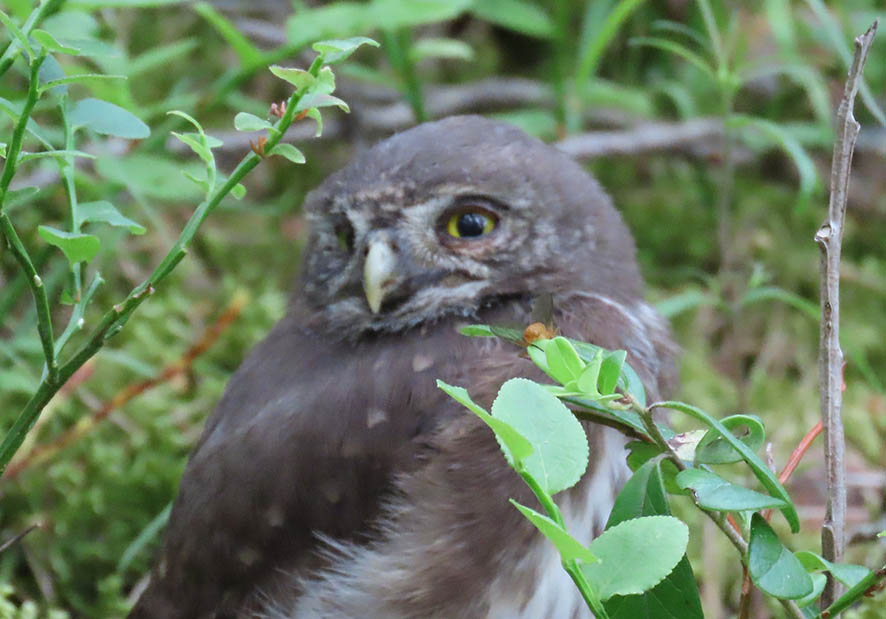
One evening we went on a canoe trip to see beavers and we were not disappointed as we watched three different beavers gliding around in the water. Another evening we saw even more beavers on another river. We also saw a spectacular beaver dam and the magnificent wetland it had created upstream. Beavers truly are ecosystem engineers and it is exciting to think that they are starting to spread in the UK.
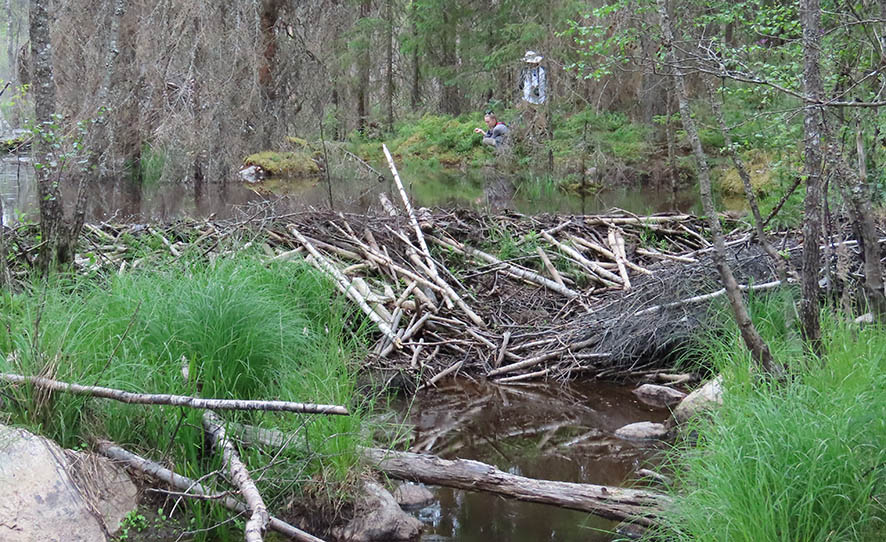

Sweden’s environmental sustainability practices and conservation initiatives set a shining example for the world. With a strong focus on renewable energy, eco-tourism, and nature conservation, the country strives to preserve its remarkable wildlife for future generations. Initiatives such as eco-lodges, organic farming, and sustainable outdoor activities showcase Sweden’s dedication to minimizing its ecological footprint while ensuring the long-term protection of its pristine ecosystems. A visit to Sweden is not only an opportunity to appreciate its wildlife but also make an active contribution to sustainable conservation efforts.

We would like to thank Stefan for his outstanding guiding, Kari for the excellent food and the whole group for being so enthusiastic and fun on this first of many trips to Sweden!
Our next summer trip will be June 2024. Watch this space! Let us know if you are interested and you will be the first to know. We are also planning a trip in the new year in the winter where Sweden will be a very different (and much colder) place!



